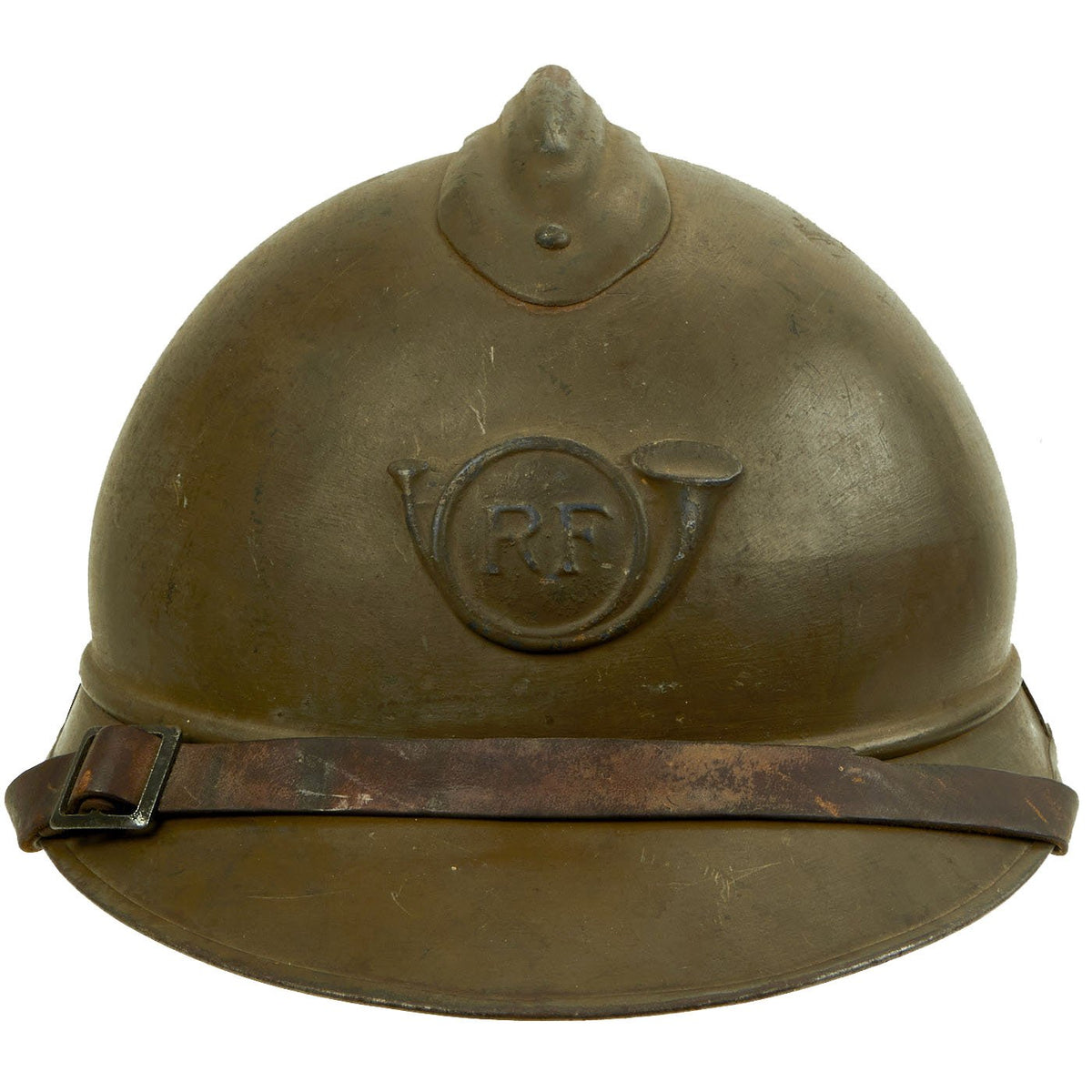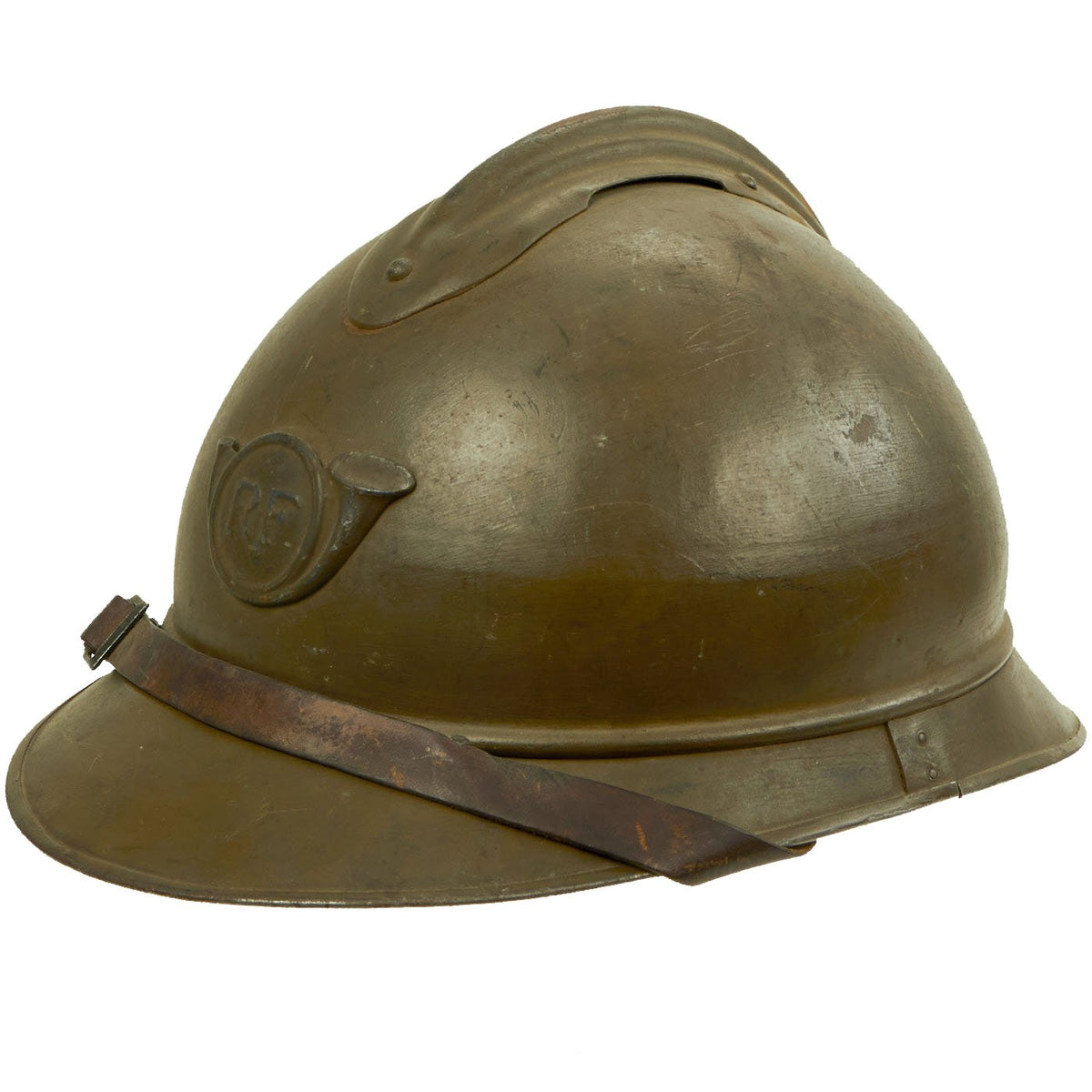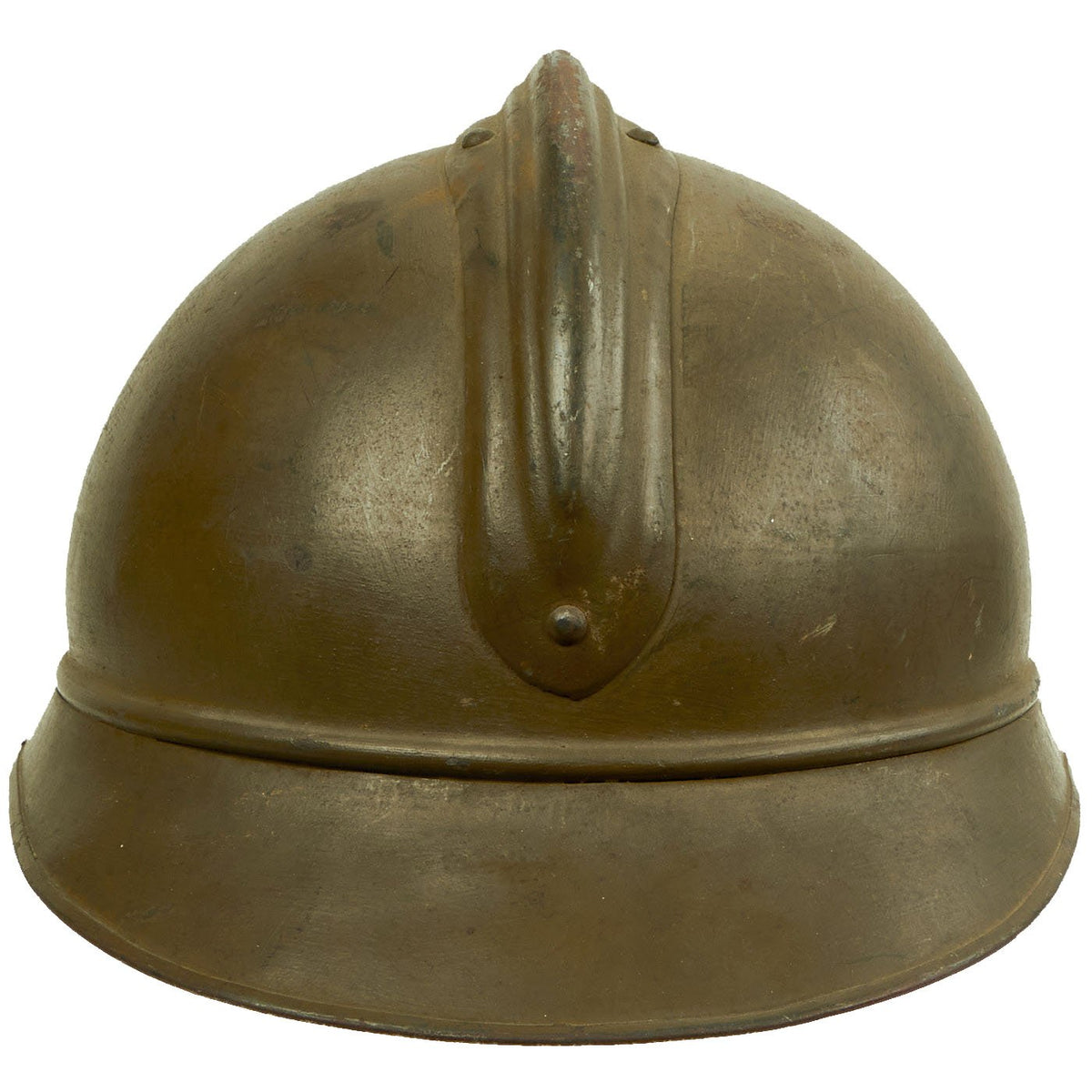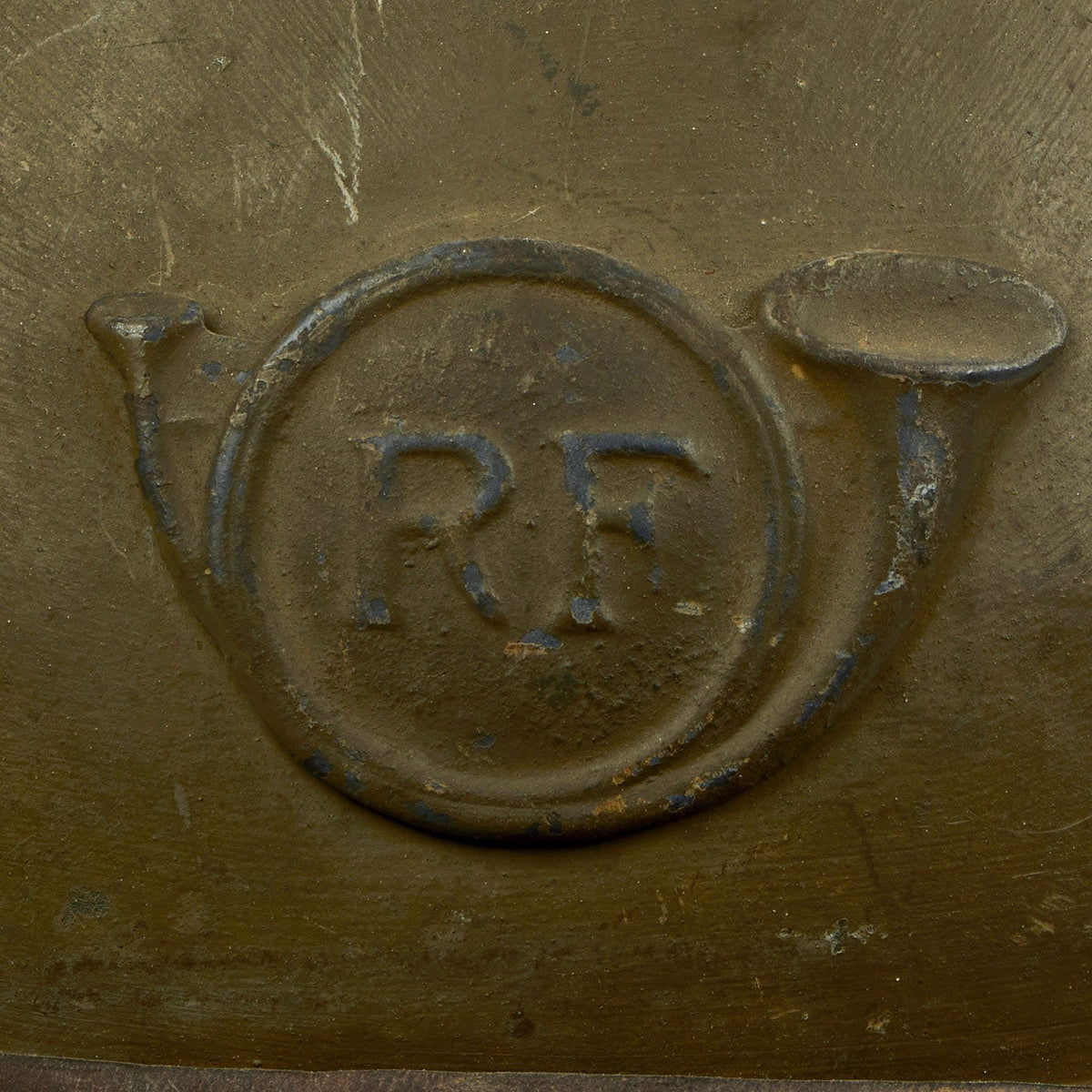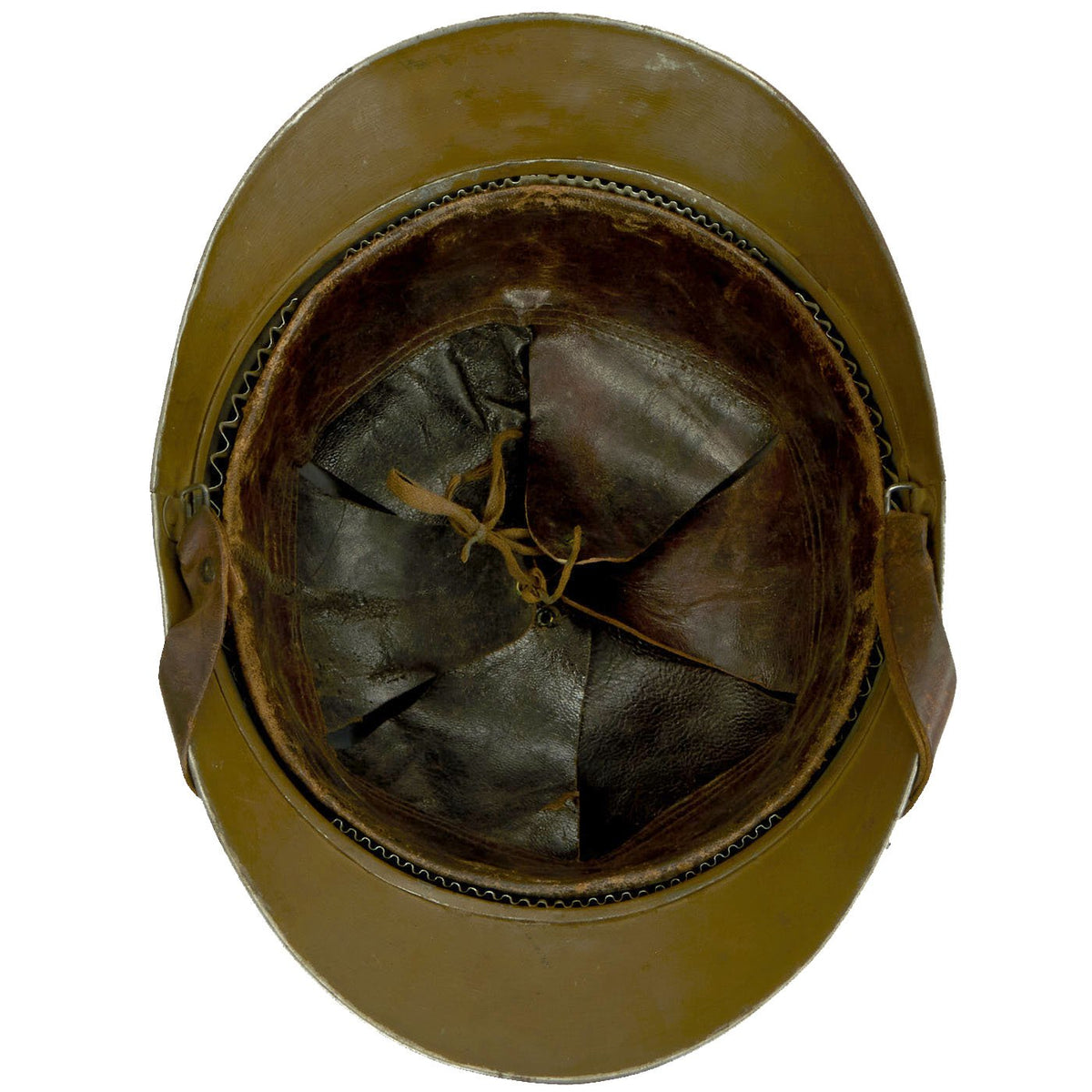Original French WWI M1915 Adrian Mountain Trooper Chasseurs Helmet – WWII Reissued Original Items
$ 495,00 $ 148,50
Original Item: Only One Available. Excellent genuine World War I M1915 French Army “Adrian” helmet. The helmet exhibits the brown ordnance paint typical of Post-WWI refitted helmets applied over the original “Horizon Blue” paint. The front of the helmet still has its original French “Hunting Horn” badge, with the standard R F on the center, for Republique Francaise. This horn is the insignia of Mountain Infantry called the Chasseurs alpine (alpine hunters).
The helmet features a complete original 2nd Pattern two-piece leather liner in excellent condition with original cotton drawstring still intact. Size is approximately US 7 ¼-7 ½ (58-59cm). All four original corrugated aluminum spacers are still present, as well as the original chinstrap. Overall condition of the helmet is excellent for its age, showing signs of honest age and handling wear.
Chasseur is the French term for “hunter”, and was originally used to designate light infantry and cavalry units that were trained for rapid action in combat, beginning in 1743. They were considered elite units, and had more specialized tasks than the standard infantry. They could deploy quickly as advance scouts in times of need. By WWI, they were divided into the chasseurs à pied (hunters on foot) and chasseurs alpine (alpine hunters).
This is an excellent example of a WWI French Chassuers M-1915 Adrian Pattern Helmet which was repainted for use by the French Army following the conclusion of the Great War. These model 1915s continued to see use with the French Army up until the end of World War Two.
A great representative example of a scarce Adrian which indeed had seen service during both world wars.
The M15 Adrian helmet (French: Casque Adrian) was a combat helmet issued to the French Army during World War I. It was the first standard helmet of the French Army and was designed when millions of French troops were engaged in trench warfare, and head wounds from the falling shrapnel generated by the new technique of indirect fire became a frequent cause of battlefield casualties. Introduced in 1915, it was the first modern steel helmet and it served as the basic helmet of many armies well into the 1930s. Initially issued to infantry soldiers, in modified form they were also issued to cavalry and tank crews. A subsequent version, the M26, was used during World War II.
Fast Shipping with Professional Packaging
Thanks to our longstanding association with UPS FedEx DHL, and other major international carriers, we are able to provide a range of shipping options. Our warehouse staff is expertly trained and will wrap your products according to our exact and precise specifications. Prior to shipping, your goods will be thoroughly examined and securely secured. We ship to thousands clients each day across multiple countries. This shows how we're dedicated to be the largest retailer on the internet. Warehouses and distribution centres can be located throughout Europe as well as the USA.
Note: Orders with more than one item will be assigned a processing date depending on the item.
Before shipping before shipping, we'll conduct a thorough inspection of the items you have ordered. Today, the majority of orders will be delivered within 48 hours. The delivery time will be between 3-7 days.
Returns
The stock is dynamic and we cannot completely manage it because multiple stakeholders are involved, including our factory and warehouse. So the actual stock may alter at any time. It's possible that you may not receive your order once the order has been made.
Our policy is valid for a period of 30 days. If you don't receive the product within 30 days, we are not able to issue a refund or an exchange.
You can only return an item if it is unused and in the same state as the day you received it. You must have the item in its original packaging.
Related products
Uncategorized
Uncategorized
Uncategorized
Uncategorized
Uncategorized
Uncategorized
Uncategorized
Armored Burgonet Helmet & Polearm from Scottish Castle Leith Hall Circa 1700 Original Items
Uncategorized
Uncategorized
Uncategorized
Uncategorized
Uncategorized
Uncategorized
Uncategorized
Uncategorized
Uncategorized
Australian WWII Owen MK1 Machine Carbine SMG Custom Fabricated Replica with Sling Original Items
Uncategorized
Angolan Rebel 1970s era 60mm Inert Display Mortar from Angolan Civil War Original Items
Uncategorized
Uncategorized
Armoured Fighting Vehicles of the World: AFVs of World War One (Hardcover Book) New Made Items
